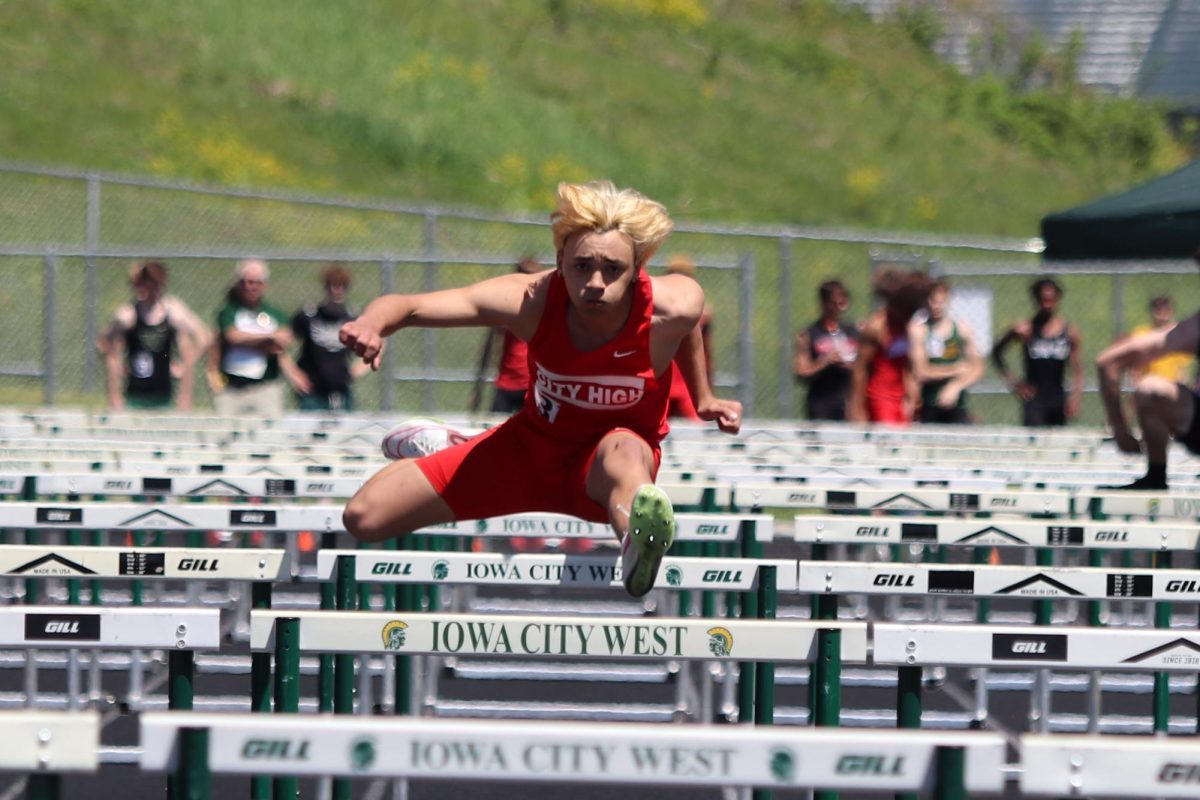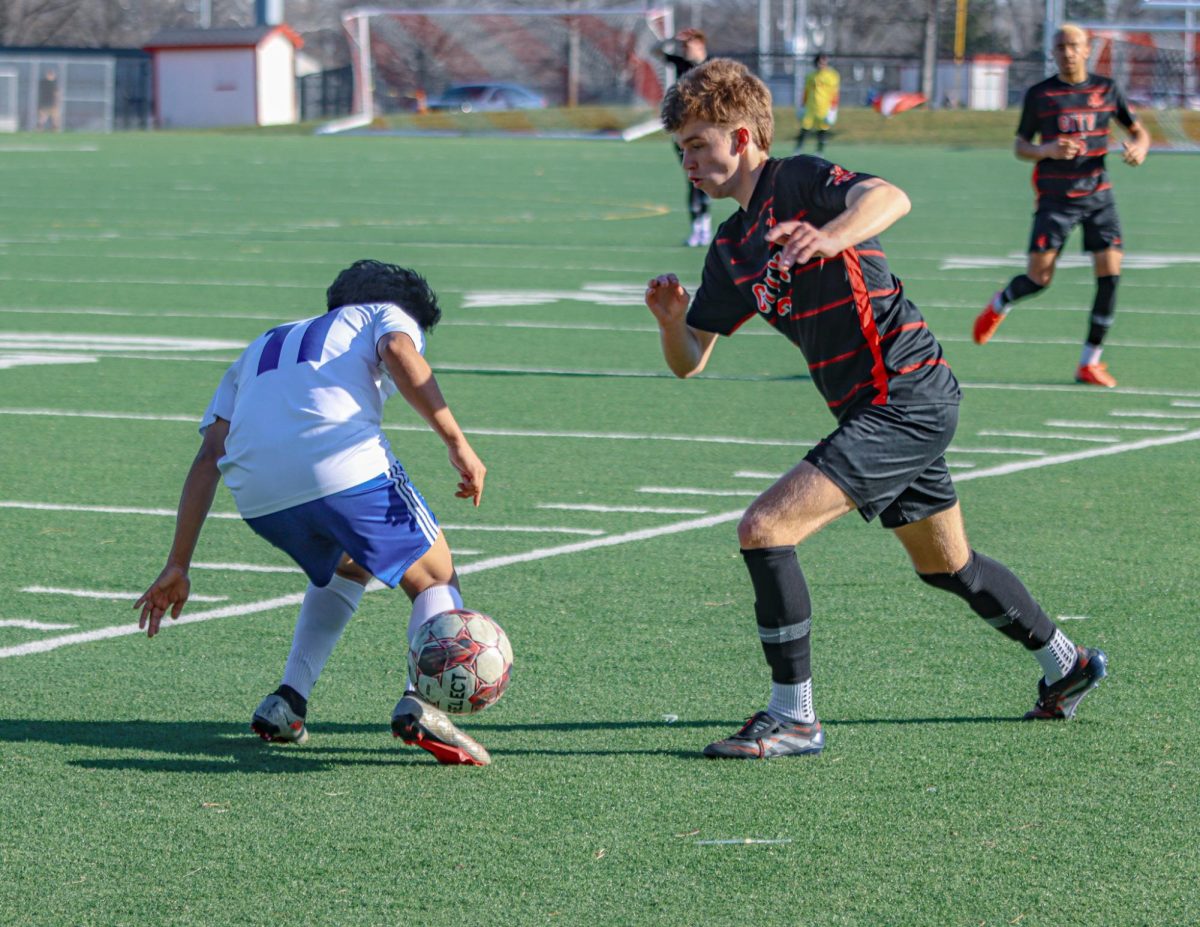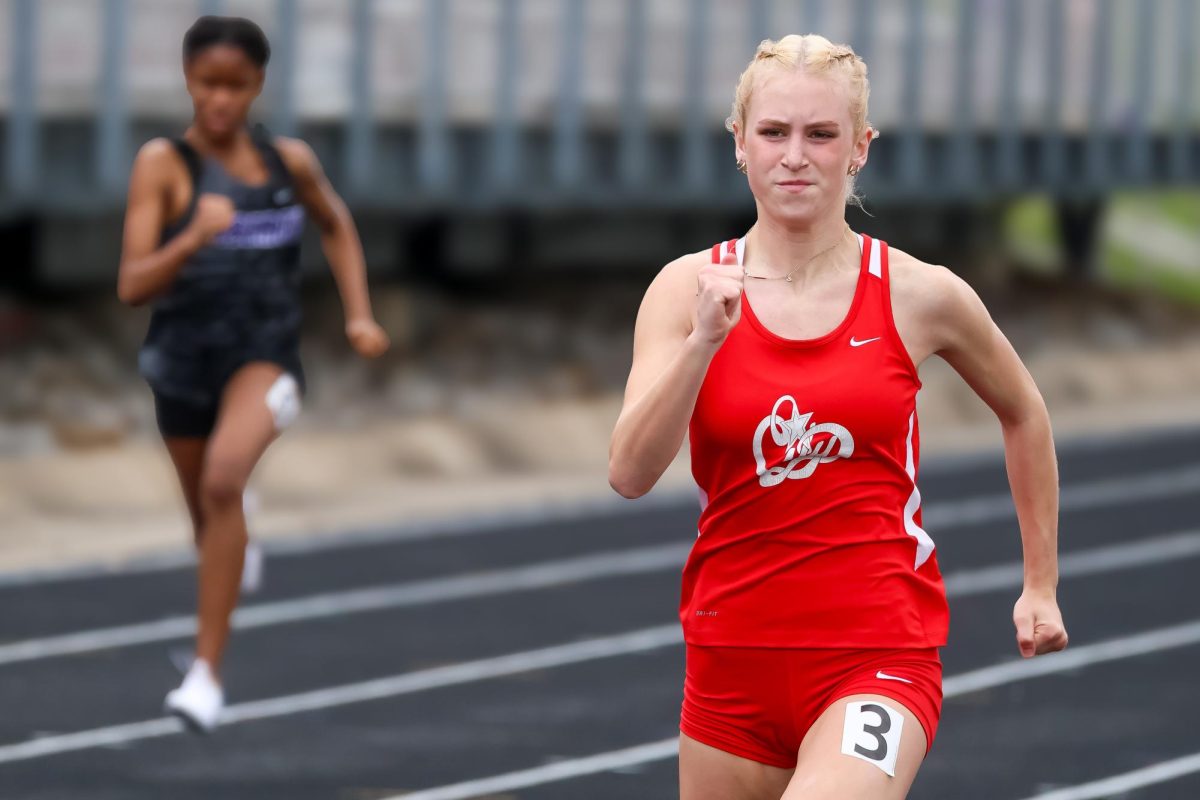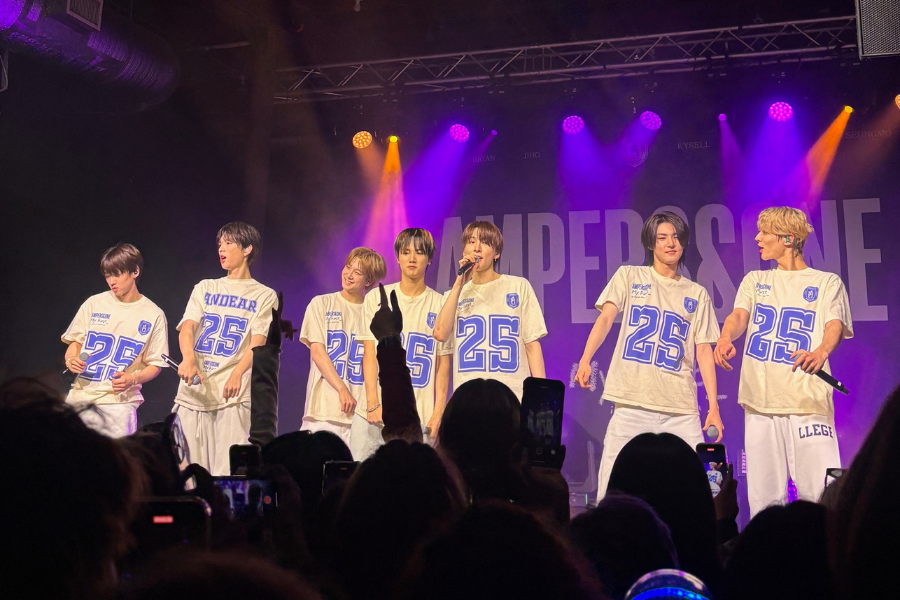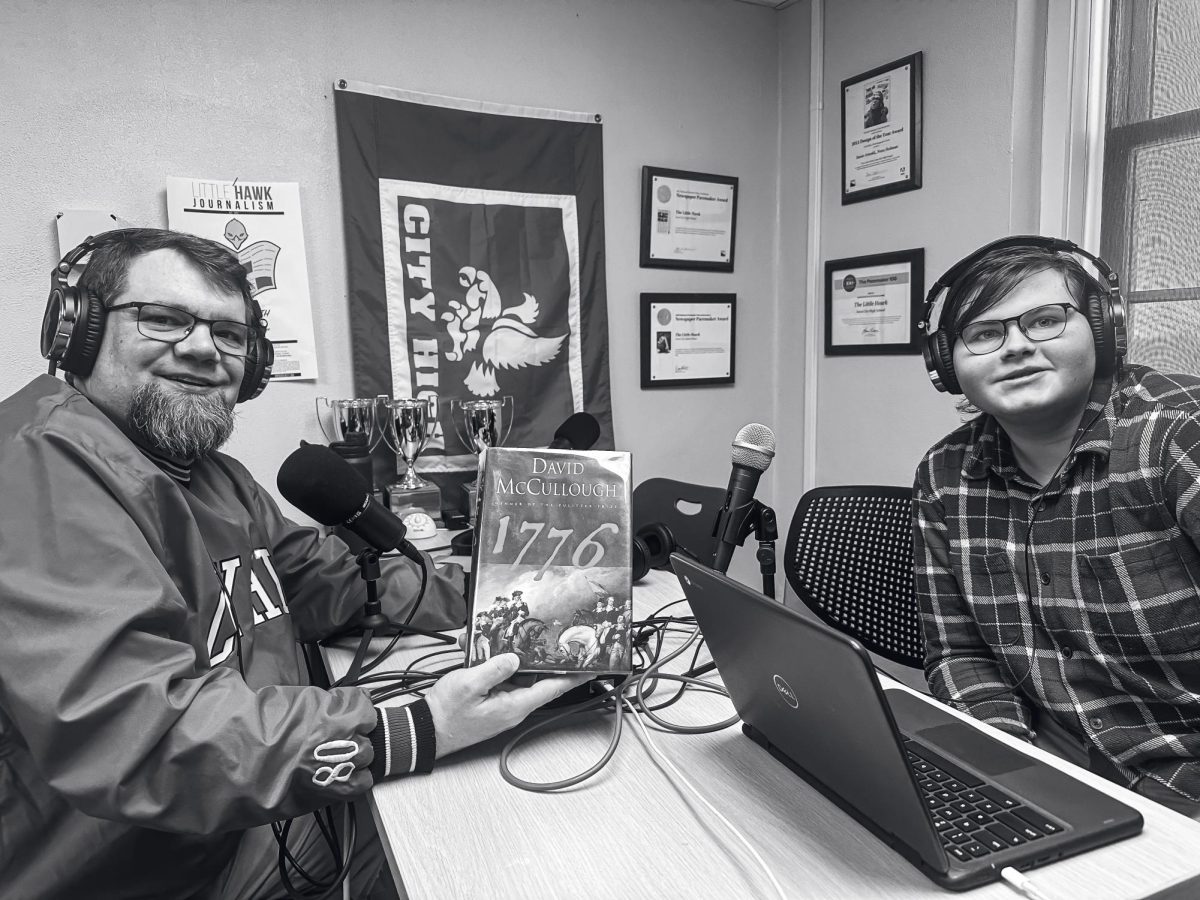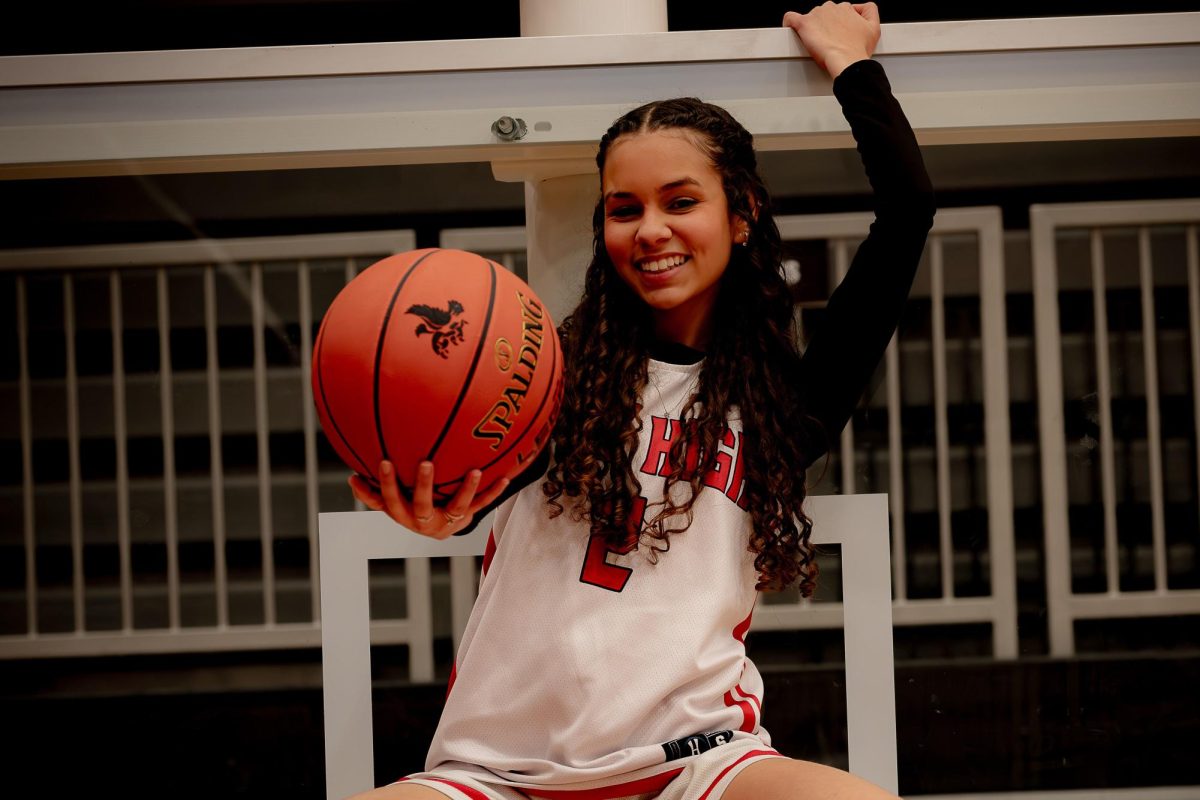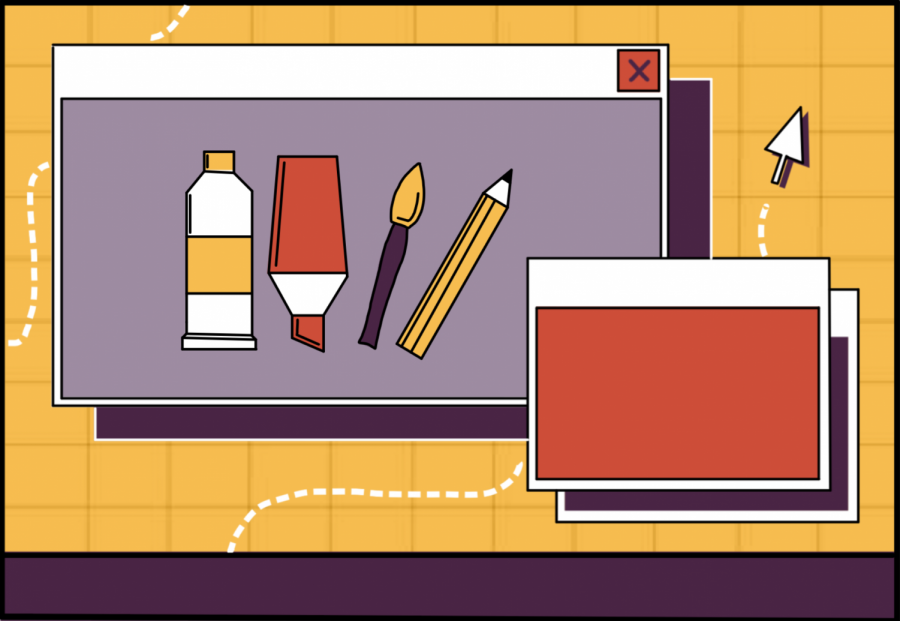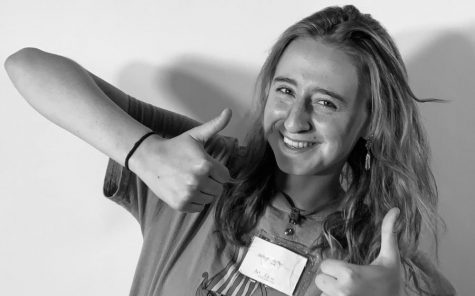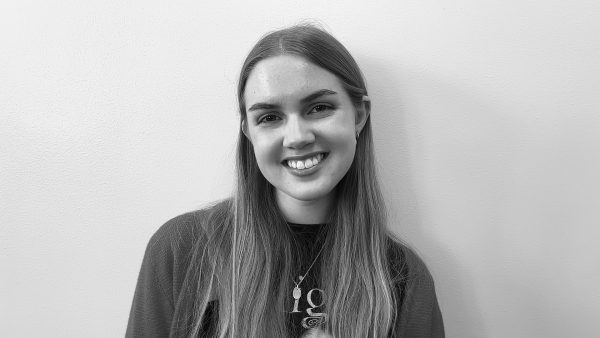City High Art Classes Struggle While Online
Art students begin the school year while online.
October 11, 2020
As Izzy Jurgens ‘22 sits on her unmade bed, she carefully runs her fingers down the ridges of her unfinished clay pot. She takes breaks to snack on honey oatmeal she made while waiting for her early-morning Zoom call to start. Suddenly, her chubby cat, Daisy, leaps up to her reportedly comfy workplace to meow. This is her first-period Ceramics class.
“I usually just set my alarm for 8:45, wake up, take the clay out from under my bed and get groovin’,” Jurgens said.
For the 2020-2021 academic year, City High art teachers Dan Peterson and Michael Close are instructing students through the ICCSD hybrid class model. Similar to previous years, Peterson will instruct hands-on art classes such as Ceramics, AP Studio Art, and Black & White Drawing. Close will handle computer applications of art such as Photography, Video Production with the addition of a glass class. According to Peterson, the City High Art Department has worked hard to provide each student with a baseline kit of materials to pick up with their textbooks during the online start of the academic year. In Jurgen’s case, she received a sculpting board, 10 pounds of recycled clay, and an assorted kit of clay tools
“I think, probably ceramics [have been the most difficult to instruct], just because it’s so tactile,” Peterson said. “For kids, it’s about being able to manipulate clay and have it in your hands. For me it’s about seeing them, seeing their hands, and helping them. And so, ceramics presents the biggest number of challenges.”
As of Peterson’s example of ceramics, online/hybrid models of schooling have introduced unique restrictions to the materials and the processes students have access to. For instance, Peterson has yet to formulate a plan to allow students to glaze and fire their ceramics. As for Close’s classes, he reports that Chromebooks are unable to run adobe apps his classes require the use of. To combat this issue, his photography class has been experimenting with logging into district desktops to access the adobe apps.
One class hit particularly hard by the restrictions of online/hybrid models of school are Close’s glass class. According to Close, he has been unable to provide materials for the class, citing that it is not feasible and unsafe. As a solution, Close has assigned photography assignments with the promise of diving into glass projects upon the transition to the hybrid model.
“As long as we are doing this remote thing, we’re going to treat it more like an art forms class,” Close said. “We’ll do some photography, some videos, some drawing. Materials-wise, [glass classes] just aren’t safe and feasible.”
While the art department has experienced many issues during their online instruction, one benefit Peterson reports is being able to work with smaller groups of students. For reference, Peterson’s biggest class this year is around 15 students, about half his normal class. Once transitioned to the hybrid model, that class will likely be five to eight students per day. While this allows for a more personalized creative experience, Peterson worries about the disconnection students will feel this year.
“For students, it’s just a disconnection [that presents the greatest struggle],” Peterson said. “Even if they don’t realize it. I think we’re gonna see, while we’re online and separated like this, just a little more of a struggle to problem solve when we’re not in a space together.”
Close agrees, citing that in-person instruction is fundamentally more effective. However, both teachers stress the importance of staying safe.
“My biggest struggle is getting people to communicate,” Close said. “It’s really hard when you’re trying to teach a class and lead a discussion and there is no discussion. Part of that is because three-quarters of your class have their camera off and you don’t even know if they’re in the room with you. The stuttering of Zoom meetings has been an annoyance as well.”
In the past, Peterson has prided his art classes’ shifting away from technology to work with real-life materials. However, now both Peterson and Close are prioritizing posting on Canvas. Peterson reports that there’s a lot of communication online with students that are not hard but important that they are doing well and consistently.
“I feel like there’s a pride about being in school, especially at the beginning of the year among teachers,” Peterson said. “We’re really proud to get a year started. It’s pretty hard to get through on a screen, especially if we’re never all together. I’ve been telling students if this goes on for a while but we persevere through this very strange way of teaching, someday we’ll look back and it will be a pretty impressive feat. We all managed to just do our best. I think I feel pretty good about that.”









